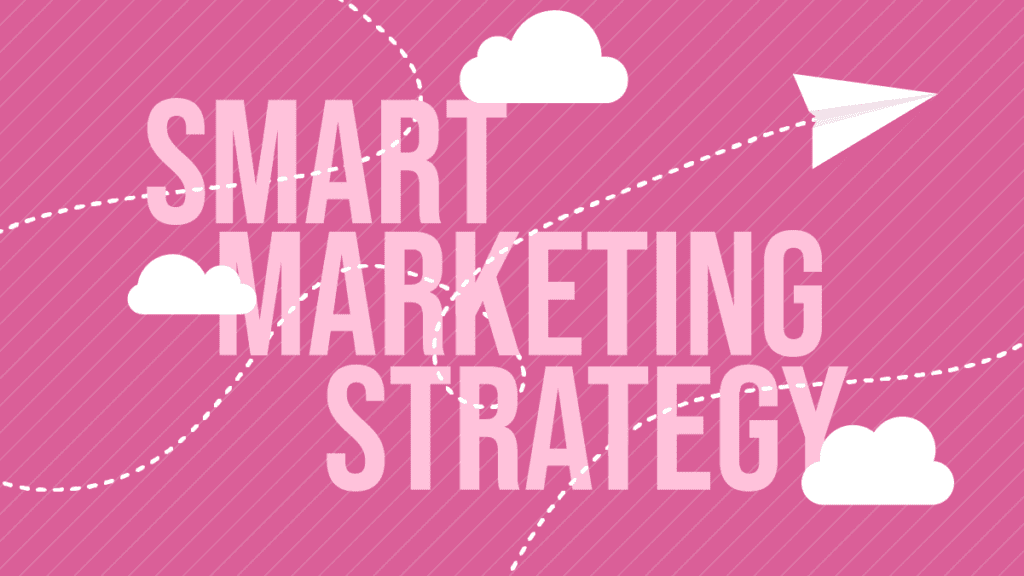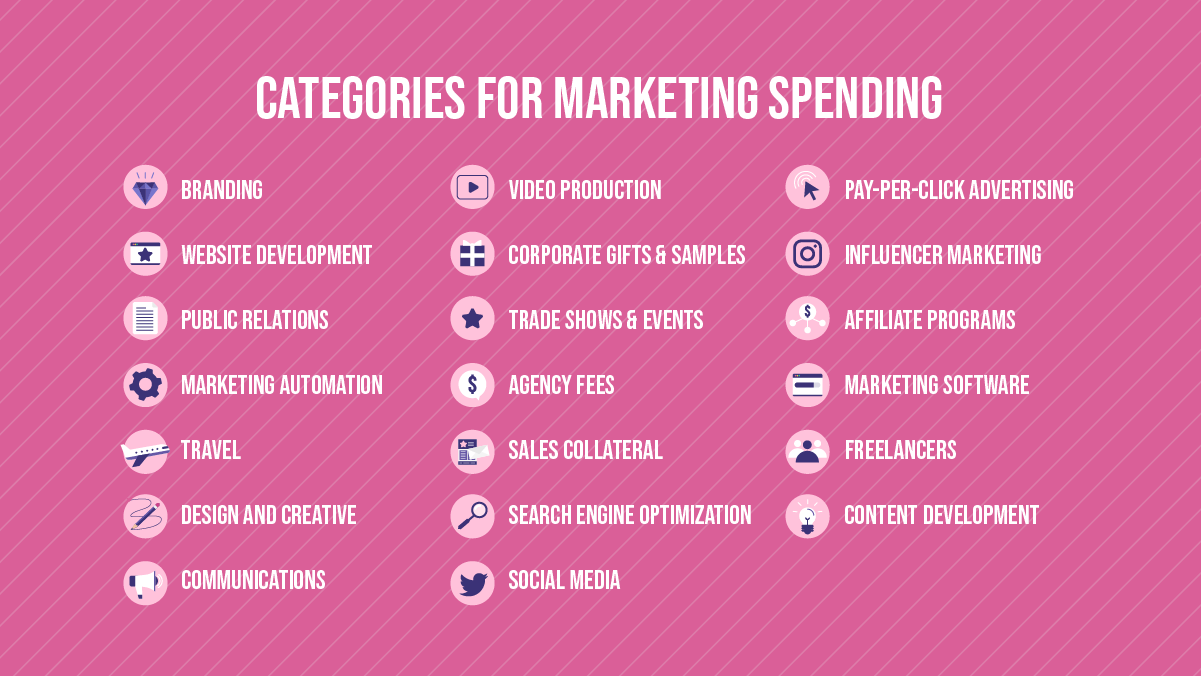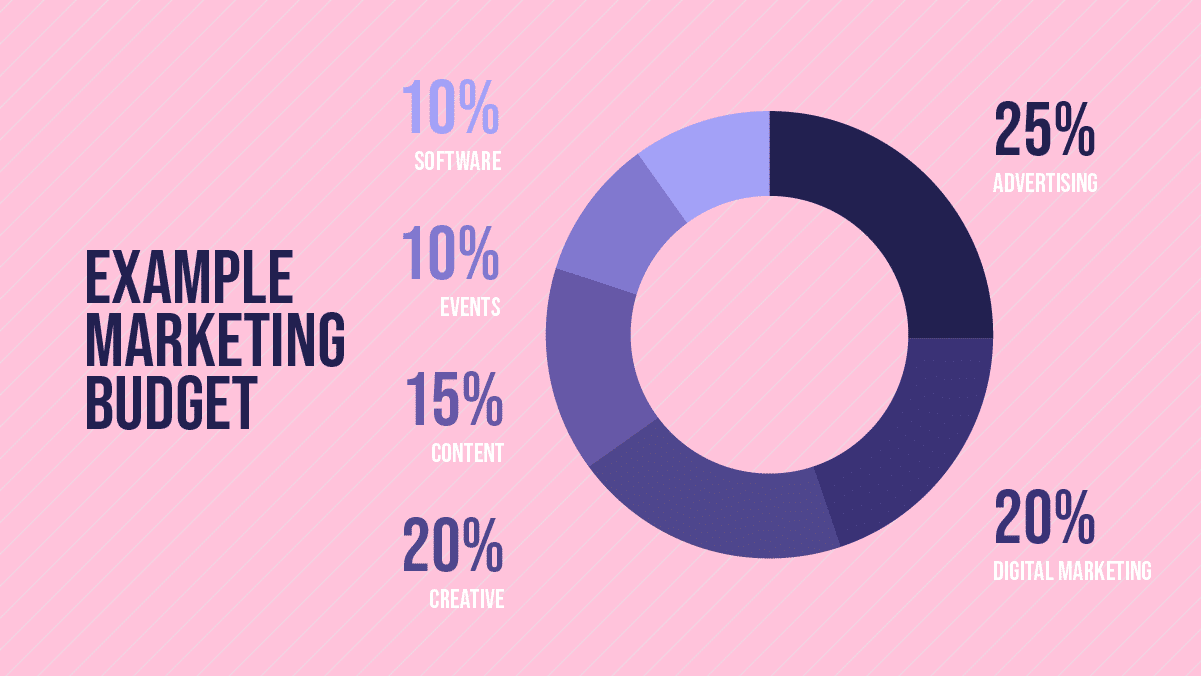How to Manage Marketing Budgets

Managing marketing budgets is challenging for any CMO. What does it take to get your brand noticed and drive sales? How do you maximize the return on investment (ROI) on your marketing expenditures? And how do you keep track of all those invoices and control marketing costs?
Marketing Budgets, Defined
A budget is a key element of every marketing plan. Your marketing budget aligns your marketing strategy with your business goals. It determines how much money you have to spend on each marketing strategy. A budget based on your marketing goals and specific strategy activities provides the road map for planning and tracking your marketing expenditures.
A marketing budget lets you plan ahead for your spending and avoid running into problems. It ensures that your marketing efforts are funded and tracked, which keeps the business from running out of money and gives you much-needed flexibility in your marketing strategy.
With so much at stake and so many marketing elements to consider – product marketing, branding, creative and content, hosting events – it’s vital to manage your marketing budget closely. You need to start with a marketing plan to set your marketing goals and decide where to invest in marketing activities. You also need a strategy to manage your marketing expenditures, along with the tracking and accounts payable tools to keep the plan on track and maximize ROI on your marketing spend.
Marketing Spend and ROI
Marketing spend is any money the marketing team spends to reach your marketing goals. For most businesses, this will be money spent on marketing efforts such as:

Your marketing spend will depend on your company’s unique needs and budget – smaller companies may spend more on promotion and building brand awareness. In comparison, larger companies may spend more on marketing segmentation and targeting.
It can be a challenge to measure ROI on marketing expenditures. The best approach is to measure everything – use marketing metrics to track the effectiveness of your marketing campaigns and use AP automation to track marketing expenditures. This approach lets you monitor your ROI and quickly adjust your marketing strategy as needed, confident that you will have enough money in your marketing budget.
How to Manage Your Marketing Budget
This article shows you how to manage your marketing budget to achieve your marketing goals and keep expenditures under control. It provides tips on setting marketing goals effectively, anticipating and managing hidden costs, and using AP automation tools such as Stampli to simplify your budget management. The article breaks the budget management process down into four steps:
- Set data-driven and measurable marketing goals
- Develop a marketing strategy to achieve the marketing goals
- Build a master marketing budget template to track expenditures
- Set out a marketing budget and spending proposals
By following these steps, you can build a solid marketing budget with good planning, a clear marketing strategy, and the tools to track and manage marketing spending.
Let’s get started.
Step 1 – Set Data-Driven and Measurable Marketing Goals
The first step is to set your marketing goals for the year. Marketing goals are usually a combination of short-term and long-term goals to drive sales and revenue for your business. The company business plan guides revenue goals, but it’s the marketing team’s responsibility to build the marketing plan and determine marketing budget allocation.
The key to setting marketing goals is to make the goals specific and measurable. That makes it easier to develop marketing strategies to achieve the goals, and it makes it easier to monitor your progress and allocate funds when and where needed.
Once you’ve developed your marketing goals, you can align them with your marketing budget via your marketing strategy. By setting data-driven and achievable marketing goals, you provide a solid foundation for your budget, which will make your marketing strategy more effective, sustainable, and flexible.
Understand Your Market
It goes without saying that you need a complete understanding of the nature of your market to build an effective marketing plan. That includes research and analysis of critical factors such as:
The current state of the market – what is the demand for the product or service you sell? What factors influence this demand?
The competitive environment – Who are your competitors, and what are they doing? Are there new competitors entering the market?
Your customer profiles – Who buys your product and why? Have you developed customer personas?
Your competitive position – How does your product stack up against the competition? Are you priced too high or too low? What’s your ad spend?
By doing your homework on your market, you’ll arm yourself with accurate and actionable data you can use to determine your marketing KPIs and set data-driven marketing goals to meet them.
Determine Marketing KPIs
Your marketing KPIs are the “targets” in your marketing plan. They measure the effectiveness of your marketing activities and are a key component in calculating ROI.
When setting your KPIs, make them as specific and targeted as possible. The KPIs should be linked to metrics like average cost per lead, average lead value, and lead to customer conversion ratio. You can achieve this by setting SMART marketing objectives.
Set SMART Marketing Goals
The SMART method is a powerful goal-setting tool. SMART stands for:
Specific – The goal should be the specific marketing result you want to achieve
Measurable – The goal can be evaluated for success or failure
Achievable – The goal can reasonably be accomplished
Realistic – Your marketing team can hit the goal with the resources available
Timely – You have a timeline or end date for when the goal must be achieved
SMART goals are powerful because they are simple, straightforward, and easy to track against KPIs. For example, a SMART marketing goal may be to increase the conversion rate of a marketing campaign from 2% to 10% within three months. If your marketing activities only achieve a 6% conversion rate in this period, you know you need to tweak your marketing strategy to hit the 10% KPI.
Turning Marketing Goals into Marketing Strategy
Once you’ve set your marketing goals, it’s time to develop the specific marketing activities you will use to reach your goals. By setting data-driven goals with specific targets, you’ll have a clear idea of what you need to achieve and what marketing strategy you will need.
Step 2 – Develop a Marketing Strategy to Achieve Your Goals
A marketing strategy is your roadmap to achieve your marketing goals. Your strategy outlines the targeted activities and projects your marketing team will use to reach your goals. It also lets you track your performance against your goals and make changes where needed.
Your marketing strategy can begin with a simple list of marketing initiatives, dates, and costs. As you develop your marketing strategy, align and prioritize each activity with your marketing goals.
Do Marketing Research
When you build your marketing strategy, be as specific as possible about your chosen activities and what results you expect to achieve from your marketing efforts. That means investing time and money in marketing research. Analyze your target market, determine where your audience is spending their time, and then target your efforts there.
You should also research your buyer’s journey – the steps your audience takes from prospect to buying your product. This marketing research will help you understand how your target audience responds to your marketing and where to invest or change marketing resources to maximize your ROI.
Targeted Marketing Activities
The core of your marketing strategy is targeting. Design each marketing initiative to reach your target audience and achieve your desired result. For example, to drive traffic to a landing page, you may launch an email campaign targeting a specific segment of your market. As the campaign progresses, you can track conversion rates to gauge the strategy’s success and make tweaks if necessary.
Choose Marketing Channels
There are four main channels for your marketing strategy. To maximize your marketing ROI, you should target your efforts in the markets where your buyers are most likely to be:
Digital Marketing – social media, online content marketing, email marketing, SEO, and pay-per-click advertising, Facebook ads, Linkedin ads
Inbound Marketing – Video, blogs, e-books and white papers, content marketing, and SEO
Outbound Marketing – Email marketing, TV & Radio ads, direct mail, trade shows and expos, press releases, promotional material
Brand Awareness – Similar to the above, but to raise awareness of your brand through content, video, SEO, public relations, and advertising
Manage Marketing Expenses
Your marketing strategy determines the amount of marketing spend you allocate to each activity. As you build your strategy, include estimated costs for each activity and expected results. This will provide a rough estimate of your ROI that you can refine later when you get real-world data from the marketing activity.
Step 3 – Build a Marketing Budget Template to Track Spending
A marketing budget template is a great way to stay on top of your marketing spend. A template lets you set a budget and track actual spending for each marketing initiative. Update your budget template regularly to keep up to date as your marketing team spends money on activities.
Build a Budget Template
You can build your marketing budget template from scratch or download a free template online. At a minimum, you should choose a template that lets you itemize and track all your marketing expenses in one place. Your template should also let you add estimated and actual expenses to make it easier to track your spending against your budget and see where you overspent or underspent.
Tracking Project Costs to Guide Marketing Strategy
You can use your marketing budget template to estimate and track expenditures for specific marketing projects or campaigns. For example, if you’re running a Facebook ad campaign, you could build a template to estimate the costs of the campaign and update it with the actual costs as your team incurs them. This lets you get a granular view of project costs to incorporate into your overall budget template.
Managing Marketing Spend Categories
You can use your budget template to establish marketing categories and their allotted budgets. It can be helpful to create a pie chart to show the percentage of budget allocated to each category so you can quickly see a birds-eye view of your marketing budget.

Once the template is complete, you can use it to build your marketing budget.
Step 4 – Set Out a Marketing Budget and Spending Proposals
Once you’ve got your marketing budget template ready, you can build your marketing budget and spending proposals. A marketing budget gives you a reference point for your expenditures as the year progresses, making it easier to plan and track your marketing spend.
Budget Oversight is Vital for Your Marketing Strategy
The primary benefit of a marketing budget is that the budget lets you track and control marketing spend. A well-designed marketing budget, based on a solid template and data-driven marketing goals and updated in real-time with actual expenditures, will provide invaluable information on how much money you spend on marketing activities. This oversight will help you anticipate cost overruns, calculate ROI on marketing activities, and change your marketing strategy on the fly.
Calculate ROI in Real-Time
Suppose you update your budget regularly and cross-check your actual expenditures against the results of your marketing activities. In that case, you will be able to calculate the ROI of these activities in real-time. This makes it easier to see which marketing activities provide maximum ROI and reallocate funding accordingly.
You can also group marketing activities by channel, campaign, or target market to calculate the real-time ROI of specific marketing types or campaigns.
Anticipate and Mitigate Hidden Costs
One of the significant advantages of having a marketing budget is that it helps avoid unexpected costs. Hidden costs can include recurring subscriptions, overspending by marketing team members, pre-paid vendor agreements, cost increases, or any other expenses you didn’t anticipate in your budget planning. Building a budget on data-driven goals and frequently updating your actual expenses will minimize ad-hoc expenditures and create a highly detailed and up-to-date picture of how much money remains in your budget.
Tracking and Managing Marketing Expenditures
The easier it is to track marketing expenses in real-time, the more efficient your marketing budget management will be. However, real-time tracking of marketing expenses can be a challenge. For example, you can typically break down marketing expenditures into three categories:
- Online payments for software, digital advertising, and online services. These are usually paid by company credit cards.
- Invoices from freelancers, marketing agencies, consultants, and contractors. These can be paid by check or credit card.
- Travel and incidental expenses for employees. These are usually paid by reimbursements to employees or company credit cards.
Different departments typically manage these expenses in most companies, which makes it hard for marketing departments to track them in real-time. If CMOs and marketing directors have to chase employees for expense reports or wait for other departments to provide them, it can slow down the tracking process.
A better solution is implementing a centralized management system for your marketing budget. An automated centralized budget management system puts all your marketing expenditures in one place to give you complete control over spending to make smarter marketing decisions.
Build a Flexible Marketing Strategy with Payment Cards
Virtual payment cards, or Pcards, are a powerful way to manage your marketing expenditures. Pcards allow your employees to pay invoices and suppliers without going through the traditional purchasing process. You can set the spending limit on each Pcard and assign them to specific team members for greater control over spending.
With an automated budget management system, Pcards allow you to track marketing expenditures from one dashboard in real-time. This gives you an instant snapshot of your marketing budget. You can also assign a Pcard to a specific marketing activity or campaign to track expenditures, which lets you gauge the cost-effectiveness of the activity in real-time.
Stampli Card lets you gain complete control and visibility over your marketing spend, and it is the only card solution integrated into the most powerful AP automation platform.
- View Stampli Card transactions and details instantly to track and control marketing expenditures
- Process Stampli Card transactions alongside invoices to easily sync your marketing purchases with your accounting system
- No more chasing employees for receipts or expense reports
- Control Stampli Card usage with card limits or usage type, or by a cardholder, marketing activity, and more
Get a free demo of Stampli today and learn how to manage your marketing budget and drive marketing ROI effectively.
